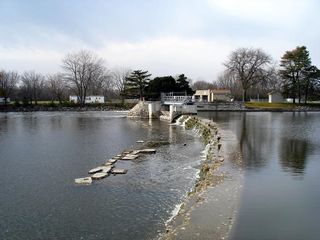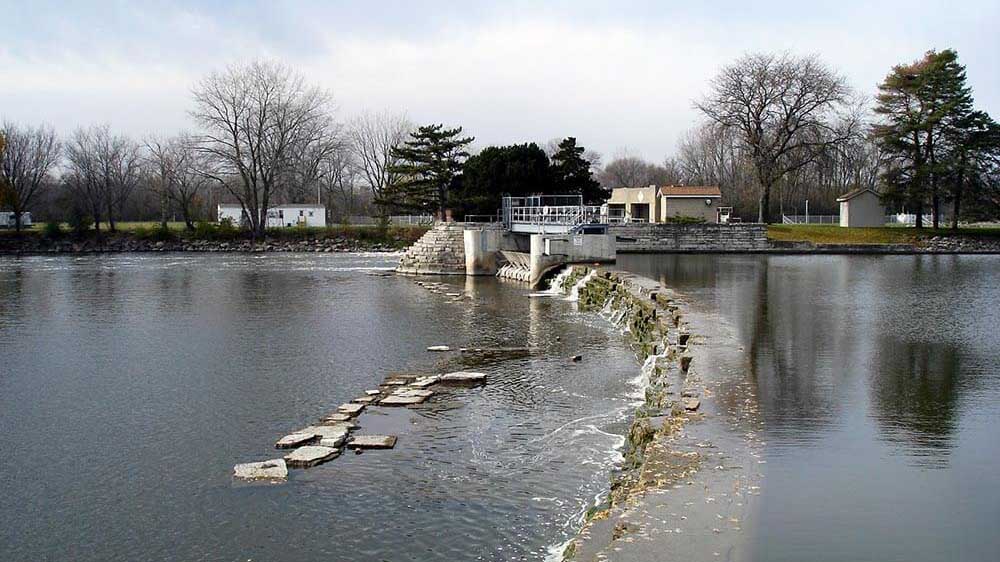An innovative use has been found for Symetrix Radius DSPs at a U.S. dam: initially installed as a paging solution between the control room and the dam’s locks, the DSPs are now being used to control the locks themselves.

Fox River, McHenry Dam, Illinois
Sound, Production & Lighting (SPL) of Skokie, IL designed and installed a Symetrix-controlled audio paging system for the McHenry Dam, built in 1907 on the Fox River. The dam has locks to bring the water level up to lake level and then return it to river level so that river traffic can continue its journey. When a boat approaches the lock, its crew has to page the control room to raise or lower the water level and let the boat pass. That requires a paging system with speakers and mics in three locations. But there was more to it than that.
“Two of the locations are outdoors and a couple hundred feet from the one in the control room,” recalled SPL owner Matt Gajowniczek. “They wanted each paging station to independently talk to each other, which they couldn’t do with a simple audio mixer. Also, they wanted to be able to broadcast a horn sound through the system to warn boats if they’re going too fast and the like. By using a Symetrix Radius DSP with Dante, we could set up the paging horns and amplifiers, connect the locations with ethernet, and manage it all from the control room. It’s a pretty typical application for the Radius DSP.”
But the project didn’t end there. Gajowniczek explained: “The locks have sensors, and if something is in the water on either side, the control room or the vessel’s crew need to be able to press a button to gain access to the lock from either end.”
To manage that access, an engineering firm proposed an industrial computer processor commonly used in manufacturing machines and robotics. “There’s nothing of this sort designed for the lock and dam market because it’s a very small market,” said Gajowniczek, “so they use technology from other industries.”
However, this solution cost in the region of $50,000—a sum that was not forthcoming when the Illinois legislature, which ultimately funds the dam facility, failed to pass a state budget; so the project was put on hold.
That’s when Gajowniczek came up with a creative solution: use the existing Radius DSPs to control the locks. “You just need to take an input command and output something else when someone is authorized to access the lock,” he explained. “We already had a powerful DSP with the I/O capabilities we need. The sensors and switches were already in the infrastructure. So we just substituted an entirely capable device we already had for a device we couldn’t afford. We bought two more I/O boxes so we could have one at each remote station and tie them together. All the system control stuff ran on 24V, and the I/O used 5V, so we used small solid-state relays to transcode the 5V to 24V, and we were ready to go.”
Gajowniczek created a software simulation of the system to prove it would work, and the client was convinced. “With the Symetrix Radius, they were able to complete the project within their budget,” he enthused. “It has been up and running for a year now, and I have not received even one call with questions or problems. They’re very happy, and everything works fine.”













